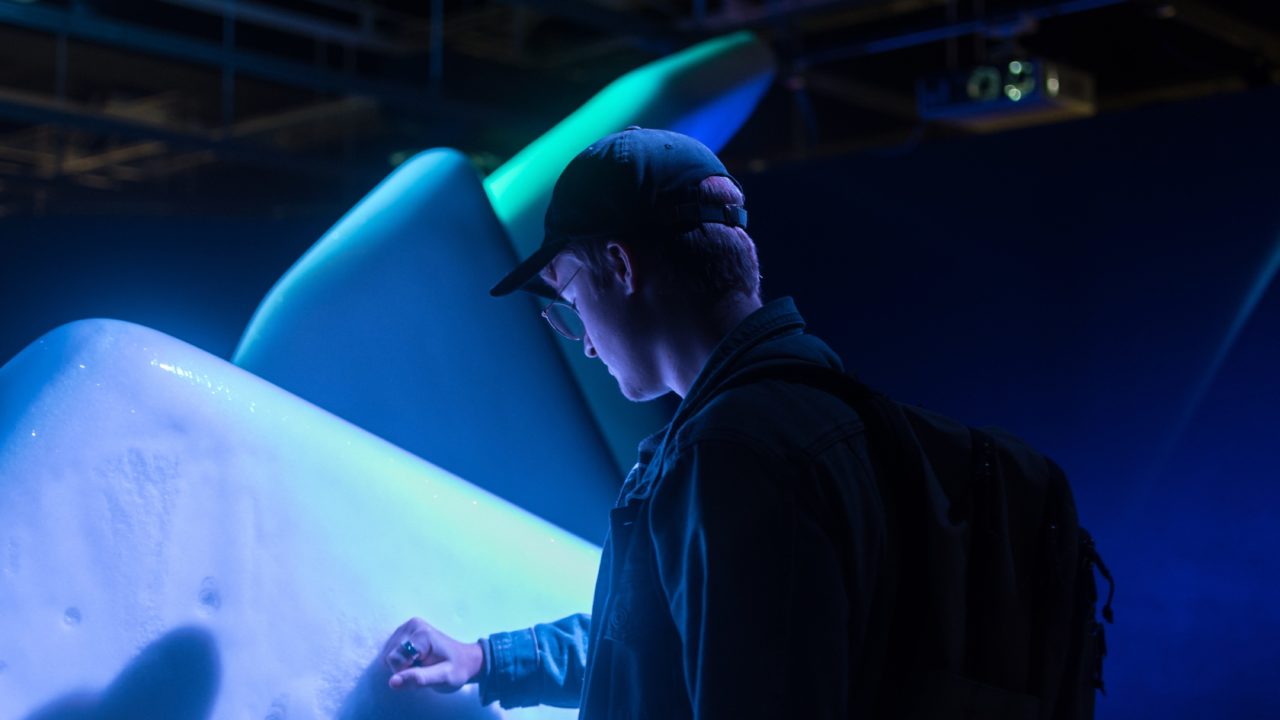
It’s been nearly three decades since the original Americans with Disabilities Act of 1990 was signed into law. Since the protective act was ratified, great strides have been made not just to prevent discrimination against people with disabilities, but to become more inclusive of their different abilities. While substantial progress has been made in the museum field, there are miles to go until every single visitor, no matter their abilities, enters a museum and leaves feeling like they were engaged in a meaningful way. To start working toward that goal, here are four tips to start better engaging visitors of all abilities.
1. Strive to Optimize Exhibit Design for Visitors with Disabilities
The idea of optimizing museum exhibits for visitors with disabilities is at the forefront of many leading museum experts’ and organizations’ planning. The Smithsonian Guidelines for Accessible Exhibit Design say, “Accessible design must be a part of this new philosophy of exhibition development because people with disabilities are a part of museums’ diverse audience.” It is no longer an accepted practice to disregard inclusion and accessibility in exhibit design.
America is home to an estimated 8.4 million visually impaired and blind individuals. Up to 82 percent of these individuals can perceive some amount of light and shadows. Using high-contrast backgrounds together with adequate and creative lighting allows these visitors to engage with exhibits that they otherwise may not be able to interact with.
In addition to high-contrast exhibits, using a plethora of different media to engage your audience will not only accommodate visitors with different challenges, but vary the experience any visitor has. Varied textures and sensations in hands-on exhibits, such as animal skins, fossils and stones, wind/air, water features, and other tactile experiences allow visitors living with low vision or blindness to experience an exhibit in a more impactful way than a simple audio tour.
In the same vein as mixed-media exhibit design, making sure immersive experiences are accessible to visitors who are wheelchair users or have limited mobility is important to ensure that all visitors get to experience your museum to the fullest. A viewing platform for a large exhibit offers a great bird’s eye view, but if it is inaccessible to wheelchair users or those with limited mobility, those visitors can be left feeling they got a less-than-exceptional experience.
Exhibit design is a crucial part of what makes a museum. Without thoughtfully composed exhibits and galleries, a museum is just a themed building. Taking exhibit design one step further and making sure the most people are reached will go a long way in serving the disability community.
2. Help Donors Allocate Their Money Toward Accessibility
Donors like to see where their money is being spent specifically, so give them an opportunity to earmark their donations for a general accessibility fund. The museum’s staff and board can distribute the money toward specific changes and additions to make your museum a more inclusive place for everyone.
Hosting a kickoff event and running awareness campaigns for this fund could be an exciting way to get the word out about your mission to reach all visitors. It would be a good opportunity to involve people living with disabilities in your own community to get their input as well.
3. Have a Visitor Guide Available for Disabled Visitors or Their Caregivers
A visitor guide that is available both online and in person allows disabled visitors and/or their caregivers a chance to preview the museum through the lenses of accessibility and inclusion. This guide can include symbols to indicate which galleries address different types of challenges, as well as short descriptions of the intent of each gallery.
Challenges visitors have can include intellectual disabilities, low vision or blindness, mobility difficulties, and hearing loss or deafness. Keeping all of these needs in mind can help craft your guide. Involving people with firsthand knowledge and experience of these challenges, whether visitors or volunteers and staff, would also be of great benefit.
A glossary or icon key can also be used in maps and signage for your museum. By normalizing the accessibility and inclusion throughout your museum using symbols or icons, you show visitors with disabilities that they are not an afterthought, but are just as important as other visitors.
A social narrative can also help visitors who may need a little more time and detailed information as they prepare for their visit. Social narratives are evidence-based tools that offer examples of experiences and social situations in your space to help the visitor navigate social cues and respond appropriately. They take the reader step-by-step through their future trip and detail who they will encounter, what they will see, and where they will be during their visit. Preparing a social narrative can also aid museum staff in understanding visitors that may face challenges in a social setting like a museum.
4. Create a Plan For Accessibility
Having a plan in place that breaks down your museum’s goals, objectives, and strategies will help guide you on the right path toward better accessibility and inclusion. This will allow you to prioritize what can be done in the short term and what projects will need more long-term planning and funding. By really putting a lot of thought and effort toward becoming more inclusive, you will start to see where you do well and where you may fall short.
This plan can either support your current strategic plan or be a standalone initiative. Either way, it can breathe new life into your mission as a museum. By critically thinking about what you can do better and speaking to those visitors who have a stake in the changes you could make, you reach a whole segment of people who may not have other places in the community that are showing the same enthusiasm. This effort goes a long way in displaying how much your organization really cares for the community it’s in.
Ensuring your museum is reaching the most people with your mission is not an easy task and will not be completed overnight. It will take hard work, determination, and implementation of specific strategies to make sure it comes to fruition. However, through the hard work of unpacking of what your museum does or does not offer, you will hopefully begin to address any deficits your museum may be facing when it comes to accessibility.
About the author:
Dani Doughty is the founder of Access Reach Consulting and aims to bring awareness and change around reaching museum visitors with disabilities. She can be reached at dani@accessreachconsulting.com.








